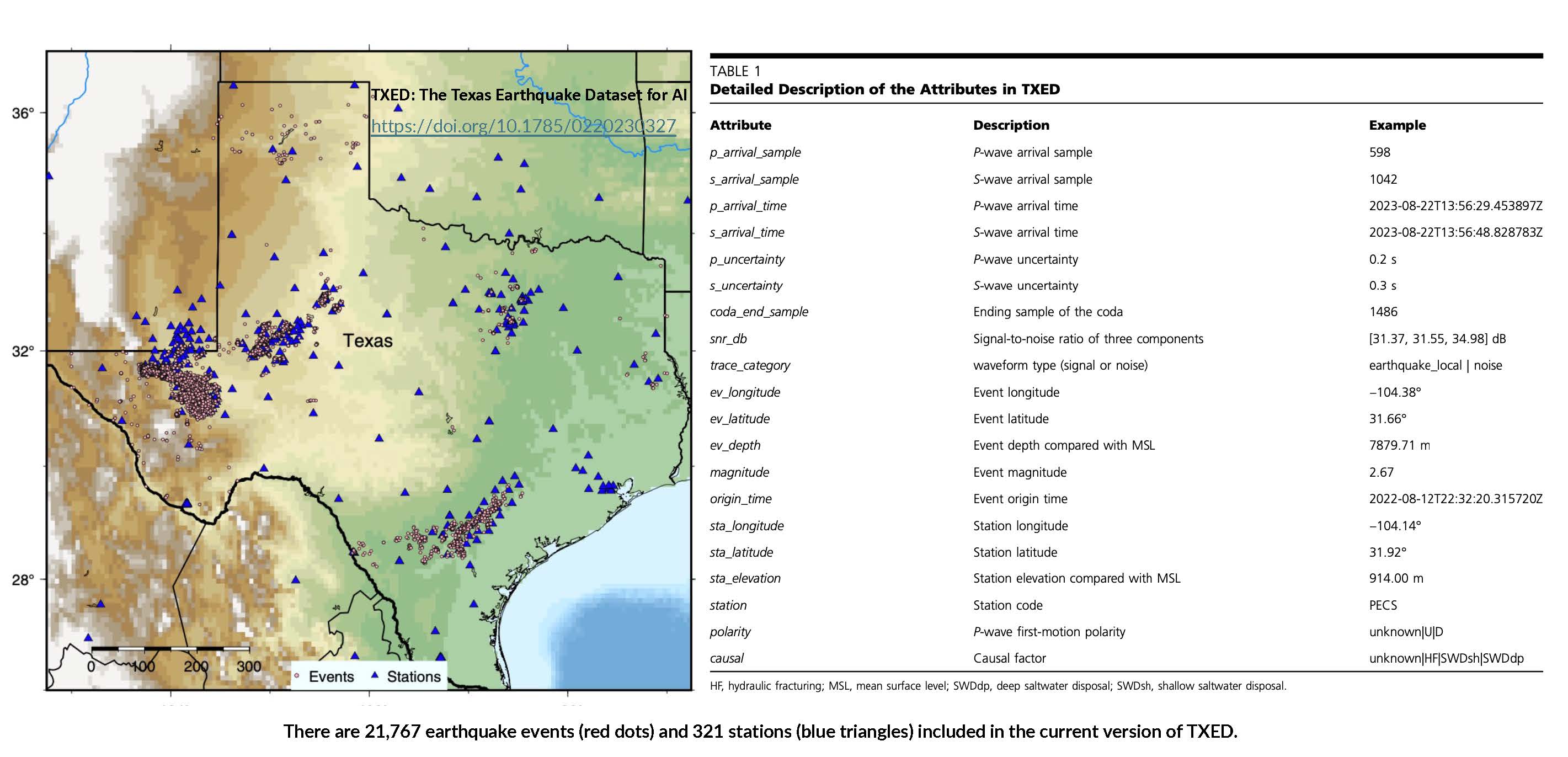Earthquake Dataset for AI
In the past decade, the seismology community has seen numerous successes in data‐driven earthquake studies due to the rapid development of machine‐learning (ML) techniques. These methods rely on large datasets with high-fidelity labels from humans to train generalized artificial intelligence (AI) models. Among the seismological applications of ML, earthquake detection and P- and S-wave arrival picking are the most widely studied, and can exceed human capabilities.
The Texas Seismological Network (TexNet) has developed a regional AI earthquake dataset for the state of Texas, called TXED. It is composed of earthquake signals with manually picked P- and S-wave arrival times and noise waveforms corresponding to more than 20,000 earthquake events spanning from January 1, 2017 to date.
This data supplements existing worldwide open-access seismological AI datasets, and represents the signal and noise characteristics of Texas. As a result, TXED can improve the performance of a global picking model in Texas. It will also serve as a benchmark for fundamental AI research, like designing seismology-oriented deep-learning architectures.
Several initial applications of TXED in phase picking, single-station location, and transfer learning studies demonstrate its promising scientific merits. TXED will be continuously maintained and developed to expand both the data collected and its functionality.


